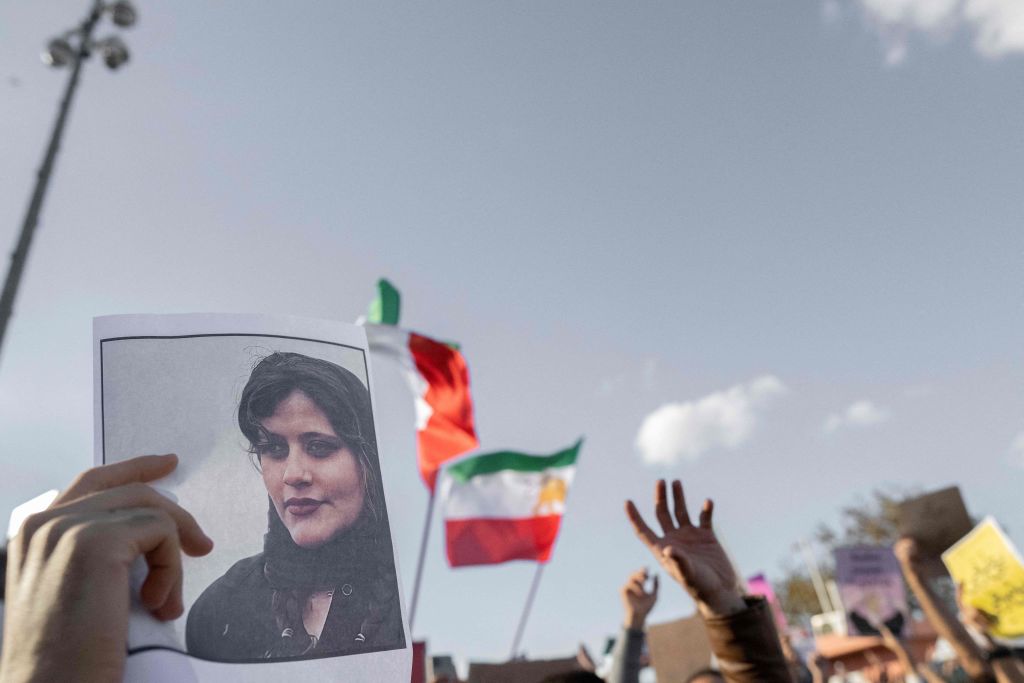
The operations of Iran’s “morality police” have effectively been suspended, a top official said, after months of widespread anti-government protests over the death of a young woman in its custody.
Officially called the Guidance Patrol, the police unit has for years stalked major intersections and thoroughfares in Iranian cities, arresting those it determined were flouting the Islamic Republic’s strict religious dress codes. The patrols seemed to disappear from Tehran’s streets soon after nationwide protests erupted in mid-September over the death of Mahsa Amini, 22, who fell into a coma after being detained for her attire.“The Guidance Patrol has nothing to do with the judiciary; it was suspended by the same institution that formed it in the past,” the semi-official Iranian Labour News Agency reported, citing Chief Public Prosecutor Mohammad Jafar Montazeri.
Read More: What to Know About the Iranian Protests Over Mahsa Amini’s Death
The comments, which don’t amount to an official dissolution of the unit, follow deadly unrest and protests that have challenged Iran’s theocratic leadership on a scale not seen since they took power after the 1979 Islamic Revolution.Montazeri’s statement is unlikely to represent a major shift in policy and didn’t address protesters’ demands to scrap mandatory religious dress codes altogether, or deal with a broad list of grievances related to civil liberties, governance and the rule of law.
With mandates for how women must dress still in place, removing the Guidance Patrol also raises questions about how the rules will be enforced, and whether an alternative system will emerge.
‘Prudent Solution’
In a sign that regulation of public life will not necessarily be relaxed, Montazeri said that “of course, the judiciary continues to monitor behavior in the community.”
In separate comments published in the moderate Shargh newspaper on Saturday, Montazeri said that the judiciary was working on a draft proposal for amendments to how laws “pertaining to chastity and hijab” should be enforced, referring to the Arabic word used to describe religious modesty codes.
“Following recent events, the relevant bodies are looking for a prudent solution,” he said, adding that Iran’s parliament and the Supreme Council of the Islamic Revolution plan to reach a decision on how to go forward within 15 days.
According to rights groups, more than 400 people have been killed by security forces in the protests, including scores of children. The United Nations said last month that more than 14,000 people have so far been arrested for taking part and many stand accused of serious offenses that carry the death penalty.
Read More: What the Success of Women-Led Protests Tell Us About Iran’s Future
Since 2006, green and white Guidance Patrol minivans have regularly cruised busy streets, especially during summer months, arresting passersby, mostly young women, deemed to be improperly dressed.
Amini’s death sparked a public outcry, and many women began publicly shunning or destroying head-scarves that have been compulsory for them since childhood. Many women are now seen out in public in Tehran’s more liberal, northern enclaves without head coverings.
Iranian officials have repeatedly accused foreign countries, including the US, of instigating the unrest and have vowed to continue their heavy crackdown on protesters.
Last month, the United Nations said it would investigate Iran for human rights violations and called on the Islamic Republic to immediately end its targeting of demonstrators.
More Must-Reads from TIME
- Why Trump’s Message Worked on Latino Men
- What Trump’s Win Could Mean for Housing
- The 100 Must-Read Books of 2024
- Sleep Doctors Share the 1 Tip That’s Changed Their Lives
- Column: Let’s Bring Back Romance
- What It’s Like to Have Long COVID As a Kid
- FX’s Say Nothing Is the Must-Watch Political Thriller of 2024
- Merle Bombardieri Is Helping People Make the Baby Decision
Contact us at letters@time.com